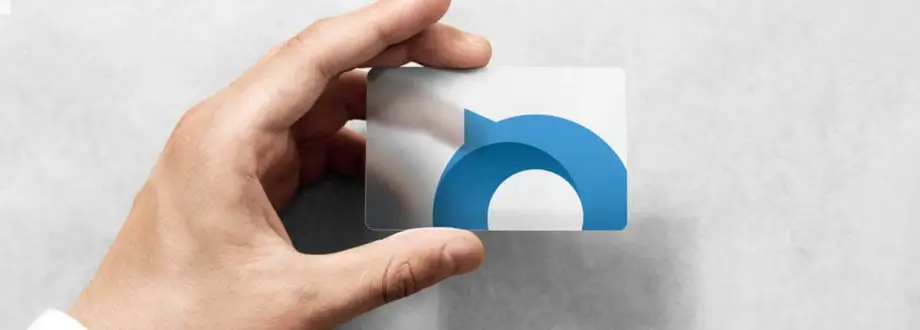With every entrepreneur on the planet fighting for the attention of potential clients, making a great first impression is central to the success of any business. Business cards may look small and unassuming, but they’re an incredibly powerful way to introduce your brand to the masses – so you need to use them to your advantage.
It’s time to up your game. It’s time to make sure these vital marketing tools are working as hard as they possibly can for your business.
Here, I’ve listed 5 creative techniques you can use to transform your drab, dull calling cards into business tools that are not only instantly recognisable, but a thoughtful extension of your brand.
1. Go for an unusual shape
Why stick to a traditional rectangle when you could opt for an unusual, eye-catching shape? Circular business cards are definitely en vogue, as are small, tile-like squares.
Die cuts can also be used to create unique shapes; you could simply use them round off the corners of the card, or go one step further and produce completely customised silhouettes.
Just make sure that whatever you produce is still small enough to fit neatly into a pocket, wallet or business card holder!
2. Add a photo
I know, I know – the thought of plastering your face across your business cards is probably making you cringe. But adding an image of yourself into the design makes it easy for your contacts to remember you by name AND by face.
Don’t just paste your standard headshot into the template. The trick here is to add an image that portrays your personality. Shoot something that’s quirky, funny or clever for maximum impact.
3. Use inks and varnishes creatively
You can add extra depth to your business card design by using high gloss spot UV to highlight a particular graphic. Even the slightest application can go a long way; for example, you could use UV spots across your logo or slogan to draw the eye to the part of the message that matters the most.
Metallic inks and foil blocking techniques will also add interesting contrast to lettering and small illustrations.
4. Include writing space for instant personalisation
You could be tempted to use up every tiny bit of space on your business card in an effort to produce a design that has the ‘wow’ factor – but sometimes, less is more.
Why not leave some white space on the back of your card so you can record appointment details, add exclusive discount codes, or leave a useful note for your new contact? This way, the prospect won’t need to scour their notes for your key takeaways – will have everything they need from you in one place.
5. Try different materials
You don’t need to stick to thin card! Give your business card an unusual texture by exploring thicker weights or rougher stock options. Many printers will even give you the option to stamp your message onto plastics, metals and even wooden surfaces.
You can also coat the card with an extra layer of varnish if you want to give it a glossy, glamorous feel (and make sure it remains free from damage).
6. Develop a mini brochure instead
If you’ve got the time (and the budget), you could create a small, foldable flyer or brochure in place of your usual business cards. Doing so will give you more space to work with, which means you can add extra sales messages or testimonials to your printed materials.
There are so many exciting print options out there that it’s easy to go overboard. An experienced graphic designer such as myself will not only help you make good use of amazing print techniques, but also ensure that the final product still looks professional, well-balanced, and on-brand.
